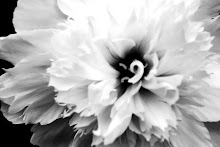Animals are great teachers, it is true; especially for those willing to open their hearts and minds to the greater lessons on how to live and thrive in our two-legged world.
Look deeper than an animal’s biology and connect with its essence—those very qualities, habits and patterns from which we may draw strength and wisdom. The Native American people call this “animal medicine,” as they have long understood the healing power of the animal kingdom.
Photo: Summer Bear by Melissa Johnson; © 2008.
Take the bear, for instance. Consider its most well known habit—going deep within the cave to hibernate for the winter until it emerges anew come spring. True, each animal has many lessons to share, but it’s easy to see how our Native Ancestors view the power of introspection to be the bear’s great metaphorical teaching. By introspection they mean one’s willingness and ability to go within and engage the process of self-examination and reflection.
Call me crazy, but I’m driven to explore and understand the deeper, often unconscious, motivations behind my own actions; a real nightmare for those who would rather not deal with the messiness of why they do what they do. But try as I might to shut it all out, part of me naturally connects with the energy of the bear as I ponder: What’s triggering this emotional response? Why did I behave that way when . . .? Is there a connection between the thoughts I entertain and the day-to-day experience of my life? What am I holding on to that’s blocking my ability to move forward?
For me, the power of introspection has brought about healing on many levels—mind, body and spirit—so much so, in fact, that being a “bear in the cave” has become my personal metaphor for solitary reflection . . . when I have an important decision to make, when I need to work through a troubling issue or want solitude from the stressed-out world around me. “In the cave” I am free to connect with my creative side and establish clear boundaries when I feel pressured by the expectations and demands of others. Sometimes this involves focused meditation; other times, it is my way of spending time alone, which allows me to turn down the volume and connect with my intuitive self—that still, small voice within that knows what’s best for my life.
Experience has taught me well: When we don’t acknowledge our “stuff” it will always find a way to express itself, like water escaping through the cracks in a wall intended to hold it back; it could get ugly. And somehow, by ignoring what needs attention, eventually we find ourselves living out the same situations and dramas, over and over again—with a different cast of characters and slightly different story lines, perhaps—which aggravate our feelings of separateness rather than help us connect to the whole.
It’s sad but true—until we become aware of our patterns and learn what’s motivating our choices, we don’t stand a chance of understanding our Self or others and this can bring about great suffering. Sometimes we can’t do this on our own and we need the help of licensed professionals to work through traumas and issues of the past. But for others, going within to access our highest wisdom is a great place to start, and a wonderful habit to adopt from our bear friends.
So maybe we go in the cave once a week, or six times a year, rather than spending the entire winter in solitude; whatever works. But there, in the light of understanding, we can release the energy of hurt feelings, resentments, anger or whatever may be holding us back, and clear the space for new life to enter.
To be like the bear requires patience and trust. We must feel safe to enter the cave and know that we will emerge in the proverbial spring. And while there, we must learn to connect with our intuitive mind and the energy of our Creator, for this is where answers live and the solutions to our most pressing dilemmas can be found.
Bear medicine, indeed. . .
Legal Disclaimer: Remember, true intuitive messages are loving directives that offer insight and guidance for our highest good. Terrifying, debilitating thoughts or those that encourage you to do things that you know are inappropriate either come from manufactured fear or psychosis. If the latter please run, not walk, to your nearest psychotherapist’s office and do not enter the cave alone again.
By Melissa Johnson
This article first appeared in Colorado's Highlander Magazine (May 2009). Reprinted with full author copyrights and editorial permission.









.jpg)



